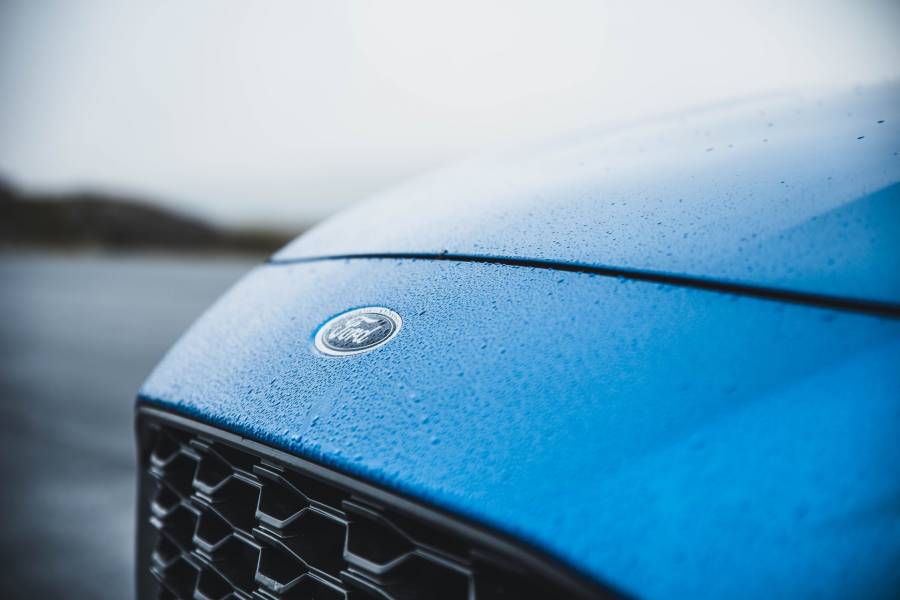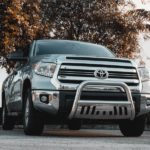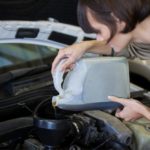Quick Navigation
Some Ford automobiles have integrated a collision warning assist system. It’s activated from a speed above 5mph to detect obstacles and issue warnings to the driver to keep safe.
While you are in motion, the Ford Collision Warning system detects, through camera technology, a possible collision with vehicles or people by scanning.

The system sensor warns by a series of warning tones and visual alert (indicator) on the instrument cluster on a Ford automobile dashboard that a collision is about to occur.
The driver is expected to brake or steer to avoid colliding with another vehicle or a pedestrian.
At this period, the system provides the driver with brake support by slightly applying brakes.
In the case of a lack of reaction from the driver or detection of an increased possibility of a crash, the system automatically brakes to prevent collision and minimize the severity of accidents.
Ford Collision Warning Malfunction
The Collision Warning system has undoubtedly helped avert many potential accidents, but how do we prevent collisions and casualties when there is a failure in this system?
Although accidents are bound to happen sometimes, we can only try to prevent them.
In a case of collision warning malfunction, please do not fret; it can be resolved. Just concentrate on driving to avoid collisions.
It is essential to know about the Ford Collision Warning system malfunction to get your mind prepared on what to do to avoid collisions and how to deal with an imminent crash.
Suppose your information display gives a message about a blockage of the front camera or a sensor. It means that your radar signals or the camera images are faulty.
A collision warning malfunction will malfunction when the radar is blocked, leading to a crash.
Below are some other relevant causes of collision warning malfunction in a Ford automobile, with solutions:
Effect Of Road Conditions
The Ford Collision Warning system may not be able to detect a possible collision on snowy or wet roads. It is because the system cannot modify the state of roads.
A wet or slick road may increase your halting distance, causing the collision warning system to alert you late enough to avoid a collision.
It is important to note that it is not advisable to use the Ford Collision Warning system or the automatic braking when driving in these weather conditions.
Always remember to drive cautiously and attentively when driving in these conditions.
Bad Weather
When driving through fog, rain, or snow, the Ford Collision Warning system may not be able to detect vehicles ahead of you.
In these situations, your sensor would be interfered with, and collision warning malfunction is possible.
When this happens, wipe off any snow or ice on the vehicle to ensure that sensors are clean. If done correctly, the system will begin to function appropriately again.
When using the Ford collision warning system in these conditions, be extra mindful and pay attention to your sensor.
Low Light And Glare
The Ford collision warning system uses a camera technology for detection.
It may not function correctly during glare or low light situations or when lighting changes suddenly. During the day, detection of collision is straightforward.
However, the sensor cannot detect obstacles that may cause a collision at night.
So when driving through a tunnel, at dusk, or when there is an abrupt change in lighting, the collision warning may struggle to detect any obstacle.
To avoid crashing into vehicles ahead, you must drive more cautiously and constantly scan the road ahead.

Faults In The Collision Warning System
However, the fault might sometimes be from the collision warning system itself.
It happens in these cases: It may be that it was not correctly set to operate in the event of a collision, or there was a time loss in the mechanism to warn the driver as regards collision, or there is a blockage in the sensor, an obstruction in the front camera or windshield, mostly dirt which impairs the radar signals.
When this happens, pull a call through authorized personnel to check the coverage and operation of the radar.
Properly clean the surface on the front of the radar or camera or remove the object causing the obstruction.
If the windshield in front of the camera is not clean, ensure the outer part is cleaned correctly.
If your camera is impaired, visibility on roads would be damaged, so make sure your camera and damaged windshield are repaired for the system to work correctly.
Essential Things To Note About The Ford Collision Warning And Its Malfunctioning
Always know that the Ford collision warning system is an additional driving aid. It is not a substitute for your attention, good judgment, or the need to apply brakes.
Failure to apply brakes when necessary and in the absence of the warning system might lead to a collision.
Do not wait to receive a collision warning before you maintain the correct distance and speed, even when the system is activated.
Do not rely exclusively on this feature, and always pay close attention to the road ahead and other vital lanes while driving.
Keep in mind the Ford collision warning system features do not take note of cyclists, animals, or pedestrians at night, inability to be careful might lead to a collision.
Learn that it would not be wrong to deactivate the system in some cases where off-road driving and obstruction cover the windscreen.
Reactivate after a while, and it will function well. In the case of false detections or vehicle detection failure, contact authorized personnel.
It is also essential to note that the collision warning system does not detect, react, or warn the driver regarding collisions from vehicles located behind or to the sides of the vehicle.
The system is designed to assist you by issuing warnings when there is a risk of collision with the vehicle in front of you.
The collision warning system is also designed to alert you with audible warnings and the display warning messages on your information display which is most advisable to avoid than ignore.
Also, ensure you pay attention to the distance warning to keep the necessary distance between yourself and other vehicles.

James has been a car enthusiast since his childhood when he learned the differences between a ford and a chevy from his father. He loves to drive and restore old cars with a special drive for Italian marvels. Currently, he has a 1968 Alfa Romeo. He has studied aeronautics and civil aviation in his college and still gets smitten by Galant SS and Lancer GSR.
He is a New York-based product training director working with a giant automotive retailer. He loves to review and uncover the vehicles and their fascinating stories. He believes in keeping it legitimate with a keen passion for research on the latest technological upgrades in cars. While reading his articles or blogs, you can sense the extensive research and dedication backing the piece of text. He loves fried chicken, music, and spending quality time with his pet dog.






